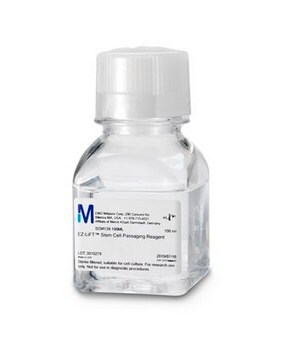T2601
Soluzione Tripsina-EDTA
1X, sterile-filtered, BioReagent, suitable for cell culture, 0.5 g porcine trypsin and 0.2 g EDTA, 4Na per liter of Hanks′ Balanced Salt Solution with phenol red
Sinonimo/i:
Trypsin-EDTA solution
About This Item
Prodotti consigliati
Livello qualitativo
Sterilità
sterile-filtered
Nome Commerciale
BioReagent
Concentrazione
1X
tecniche
cell culture | mammalian: suitable
Condizioni di spedizione
wet ice
Temperatura di conservazione
2-8°C
Cerchi prodotti simili? Visita Guida al confronto tra prodotti
Descrizione generale
Applicazioni
Azioni biochim/fisiol
Caratteristiche e vantaggi
- Save Time - no more freeze or thaw cycles
- Save Space - store at 2-8°C and free up your freezer
- Does not need to be aliquoted
- Only the best for your cells - manufactured in GMP environment
Nota sulla preparazione
Stoccaggio e stabilità
Note legali
Codice della classe di stoccaggio
12 - Non Combustible Liquids
Classe di pericolosità dell'acqua (WGK)
WGK 1
Punto d’infiammabilità (°F)
Not applicable
Punto d’infiammabilità (°C)
Not applicable
Certificati d'analisi (COA)
Cerca il Certificati d'analisi (COA) digitando il numero di lotto/batch corrispondente. I numeri di lotto o di batch sono stampati sull'etichetta dei prodotti dopo la parola ‘Lotto’ o ‘Batch’.
Possiedi già questo prodotto?
I documenti relativi ai prodotti acquistati recentemente sono disponibili nell’Archivio dei documenti.
I clienti hanno visto anche
Protocolli
StableCell™ Trypsin solutions are designed to perform cell detachment as standard trypsin solutions do, without the need to aliquot, freeze, and thaw. This saves significant time before passaging.
Il team dei nostri ricercatori vanta grande esperienza in tutte le aree della ricerca quali Life Science, scienza dei materiali, sintesi chimica, cromatografia, discipline analitiche, ecc..
Contatta l'Assistenza Tecnica.






